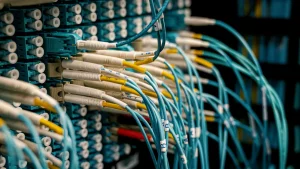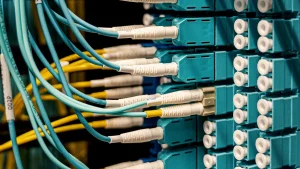
Newsunn’s 40G QSFP+ LR4 10km transceiver for SMF is a high-performance optical solution. It supports distances up to 10 kilometers over single-mode fiber. This advanced module complies with the 40GBASE-LR4 standard, ensuring seamless integration. It converts 10Gb/s electrical data into four CWDM optical signals for robust 40Gb/s transmission. Its primary purpose involves providing reliable, high-speed connectivity for demanding network applications.
Key Takeaways
- Newsunn’s 40G QSFP+ LR4 transceiver sends data up to 10 kilometers.
- It uses single-mode fiber for long-distance, high-speed connections.
- The ‘LR4’ means it uses four light paths for fast 40 Gigabit data.
- This transceiver works well for connecting data centers and large offices.
- It fits many network devices like switches and routers.
- The module helps networks grow and saves money over time.
- Newsunn tests each transceiver carefully for good quality and performance.
Understanding the 40G QSFP+ LR4 10km Transceiver for SMF Technology

Newsunn’s 40G QSFP+ LR4 10km transceiver for SMF represents a significant advancement in high-speed networking. Understanding its underlying technology reveals its capabilities for modern data infrastructure.
The QSFP+ Form Factor for 40G Transceivers
The Quad Small Form-Factor Pluggable Plus (QSFP+) form factor is a cornerstone of 40 Gigabit Ethernet. It offers a compact and efficient design for high-density network equipment.
Benefits of Compact Design
The compact design of QSFP+ modules provides substantial advantages. It allows for greater port density on network devices. A single QSFP+ port can aggregate four 10 Gbit/s channels. This aggregation forms a single 40 Gigabit Ethernet link. For example, a 24-port QSFP+ 1U switch can support 96 individual 10GbE connections. This significantly enhances the number of connections available in a limited space.
Hot-Pluggable Functionality
QSFP+ transceivers feature hot-pluggable functionality. Network administrators can insert or remove these modules without powering down the host equipment. This capability simplifies maintenance and upgrades. It also minimizes network downtime, ensuring continuous operation.
LR4 Standard Explained for 10km Transceivers
The "LR4" designation in the transceiver’s name is crucial. It signifies "Long Reach 4-lane" capability. This standard defines how the module operates over extended distances.
Long Reach Capabilities
The LR4 standard specifically targets long-distance transmission. It enables data transfer up to 10 kilometers over single-mode fiber (SMF). This reach makes it ideal for connecting distant network segments. It supports critical applications like data center interconnects and enterprise networking.
4-Lane CWDM Operation
The 40G QSFP+ LR4 transceiver converts four 10G electrical signals into four distinct optical wavelengths. It then multiplexes these wavelengths onto a single fiber strand. At the receiving end, the module performs the reverse process. It demultiplexes the optical signals back into four separate electrical data outputs. This 4-lane Coarse Wavelength Division Multiplexing (CWDM) operation efficiently utilizes the fiber optic cable.
Single-Mode Fiber (SMF) Essentials for 40G Transmission
Single-Mode Fiber (SMF) is indispensable for the Newsunn 40G QSFP+ LR4 10km transceiver. It provides the necessary medium for long-distance, high-speed data transmission.
Core Diameter and Light Propagation
SMF has a very small core diameter, typically around 9 micrometers. This small core allows only a single mode of light to propagate through the fiber. This characteristic prevents modal dispersion, a common issue in multi-mode fiber. Modal dispersion causes light pulses to spread out, limiting transmission distance.
Advantages for Long-Distance 40G Transceiver for SMF
SMF exhibits significantly less signal attenuation over distance compared to Multi-Mode Fiber (MMF). This allows it to transmit data much further. OS2 SMF cables can extend up to 200 kilometers, supporting high data loads. The absence of modal dispersion in SMF enables much longer transmission distances for 40G and 100G links. This makes SMF the preferred choice for the 10km reach of the Newsunn 40G QSFP+ LR4 module.
Newsunn’s 40G QSFP+ LR4 10km Transceiver for SMF: Key Specifications
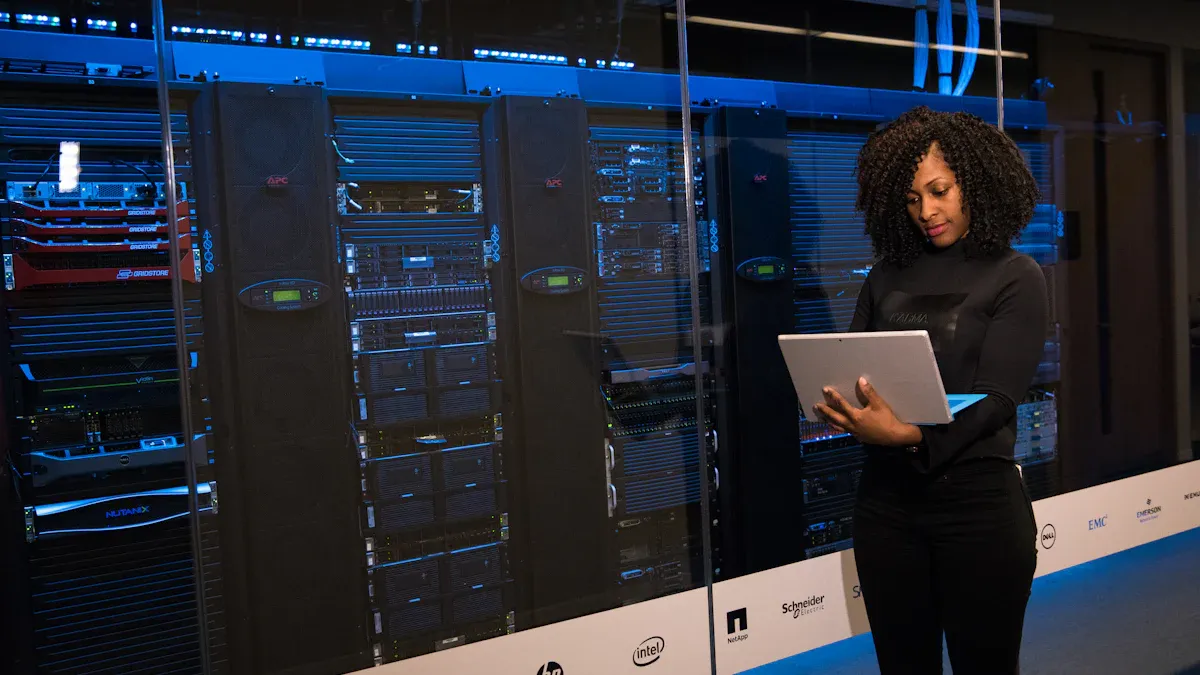
Newsunn’s 40G QSFP+ LR4 10km transceiver for SMF offers robust performance. Its design meets the rigorous demands of high-speed data networks. This section details the critical specifications that define its capabilities.
Optical Parameters of the 40G Transceiver for SMF
The optical parameters are fundamental to the transceiver’s ability to transmit data over long distances. These specifications ensure reliable signal integrity.
Wavelengths and CWDM Channels (1271, 1291, 1311, 1331 nm)
The Newsunn 40G QSFP+ LR4 module uses four distinct CWDM channels. These channels operate at precise central wavelengths: 1271 nm, 1291 nm, 1311 nm, and 1331 nm. This wavelength division multiplexing allows the module to transmit four 10Gb/s data streams simultaneously over a single fiber. The ITU-T G.694.2 standard defines this specific CWDM wavelength grid.
Transmit Power (Tx)
Transmit power, or Tx power, measures the strength of the optical signal leaving the transceiver. An appropriate Tx power ensures the signal reaches the receiver with sufficient strength. Different manufacturers specify varying ranges for their 40G QSFP+ LR4 transceivers. For example, a common range for Tx output is -7 to 2.3 dBm.
| Feature | Value |
|---|---|
| Brand | WHGEARLINK |
| Description | QSFP 40G 1310nm 10km LC |
| Data Rate | 40G |
| Package | QSFP+ |
| Wavelength (nm) | 1310nm |
| Reach | 10km |
| Connector | LC |
| TX output (dBm) | -7 to 2.3 |
| RX Sensitivity (dBm) | -11.5 |
| Power Consumption (W) | <2.5W |
Newsunn‘s module delivers consistent transmit power within industry-accepted limits. This ensures optimal signal launch into the single-mode fiber.
Receive Sensitivity (Rx)
Receive sensitivity, or Rx sensitivity, indicates the minimum optical power the receiver needs to correctly interpret the data. A lower (more negative) Rx sensitivity value means the receiver can detect weaker signals. This capability is crucial for long-distance transmission. The Newsunn transceiver features excellent receive sensitivity. It effectively captures attenuated signals after traveling up to 10 kilometers.
Optical Budget for 10km Reach
The optical budget represents the maximum allowable signal loss between the transmitter and receiver. It accounts for fiber attenuation, connector losses, and splice losses. For a 10km reach, the Newsunn 40G QSFP+ LR4 transceiver for SMF provides a robust optical budget. This budget guarantees reliable data transmission over the specified distance. It also accommodates typical infrastructure losses.
Electrical and Mechanical Specifications of the 40G Transceiver for SMF
Beyond optical performance, the electrical and mechanical characteristics define the transceiver’s operational efficiency and physical compatibility.
Power Consumption (Max 3.5W)
Power consumption is a critical factor in data center operations. Lower power consumption reduces operational costs and heat generation. Newsunn’s 40G QSFP+ LR4 module has a maximum power consumption of 3.5W. This figure aligns with industry standards for high-performance 40G transceivers.
| Vendor | Product Name | Max Power Consumption |
|---|---|---|
| AOA Tech | QSFP-40G-LR4 | 2.5W |
| Approved Networks | 40GBASE-LR4 QSFP+ SMF 1271-1331nm 10km DDM Transceiver | 3.5 W |
| ETU-Link Technology | 40G QSFP+ LR4 10KM LC Optical Transceiver | Commercial: < 3.5W, Industrial: < 4.5W |
This efficient power usage contributes to a greener and more cost-effective network infrastructure.
Operating Temperature Range (0 to 70°C)
The operating temperature range specifies the environmental conditions under which the transceiver performs reliably. Newsunn’s module operates within a commercial temperature range of 0 to 70°C. This range ensures stable performance in typical data center and enterprise environments.
Suliton’s 40G QSFP+ LR4 modules specify an operating case temperature range of 0°C to +70°C.
This standard temperature range is common for commercial-grade optical transceivers.
| Transceiver Type | Operating Temperature Range |
|---|---|
| Commercial (General) | 0 to 70°C (32 to 158°F) |
| QSFP LR4 Lite (WSP-Q40GLR4L) | +10 to 60°C (50 to 140°F) |
Dimensions and Weight
The QSFP+ form factor is compact. This design allows for high port density in network equipment. Newsunn’s transceiver adheres to these standard dimensions. Its lightweight construction simplifies installation and reduces stress on host equipment. The module features a duplex LC connector for optical connectivity. A 148-pin connector handles the electrical interface.
Compliance and Standards for the 40G Transceiver for SMF
Compliance with industry standards guarantees interoperability, reliability, and performance. Newsunn’s 40G QSFP+ LR4 module meets several key standards.
IEEE 802.3ba 40GBASE-LR4 Compliance
The Newsunn transceiver fully complies with the IEEE 802.3ba 40GBASE-LR4 standard. This compliance ensures seamless integration into existing 40 Gigabit Ethernet networks. It also guarantees adherence to established protocols for data transmission. This standard defines the physical layer specifications for 40Gb/s operation over single-mode fiber.
QSFP+ MSA Compliance
The QSFP+ Multi-Source Agreement (MSA) defines the form factor, electrical interface, and management interface for QSFP+ modules. Newsunn’s transceiver is MSA compliant. This compliance ensures mechanical and electrical interoperability with host equipment from various vendors. It also supports real-time monitoring capabilities through Digital Diagnostics Monitoring (DDM).
A fundamental compliance requirement for 40G QSFP+ transceivers is full MSA compliance, which ensures standardized performance and real-time monitoring capabilities through DOM support. This adherence guarantees mechanical and electrical interoperability between modules from different vendors and host equipment like switches, routers, and NICs.
Key aspects of QSFP+ MSA compliance include:
- Mechanical, Electrical, and Functional Interchangeability: The MSA ensures compatibility and reliability among transceivers from different manufacturers.
- Form Factor & Pins: QSFP+ modules use a 38-contact connector. This connector manages high-speed signals, power, and control lines.
- Digital Diagnostics (DDM / I²C): MSA compliance includes support for I²C-based DDM. This provides real-time access to critical performance parameters. These parameters include temperature, voltage, and optical levels.
- IEEE 802.3ba Compatibility: QSFP+ modules must adhere to IEEE 802.3ba protocols. This supports various 40GBASE standards.
RoHS and CE/FCC Certifications
Newsunn’s 40G QSFP+ LR4 transceiver holds RoHS, CE, and FCC certifications. RoHS (Restriction of Hazardous Substances) compliance ensures the product does not contain harmful materials. CE (Conformité Européenne) marking indicates conformity with European health, safety, and environmental protection standards. FCC (Federal Communications Commission) certification confirms the device meets U.S. electromagnetic interference standards. These certifications demonstrate Newsunn’s commitment to product quality, safety, and environmental responsibility.
Core Applications of the 40G QSFP+ LR4 10km Transceiver for SMF
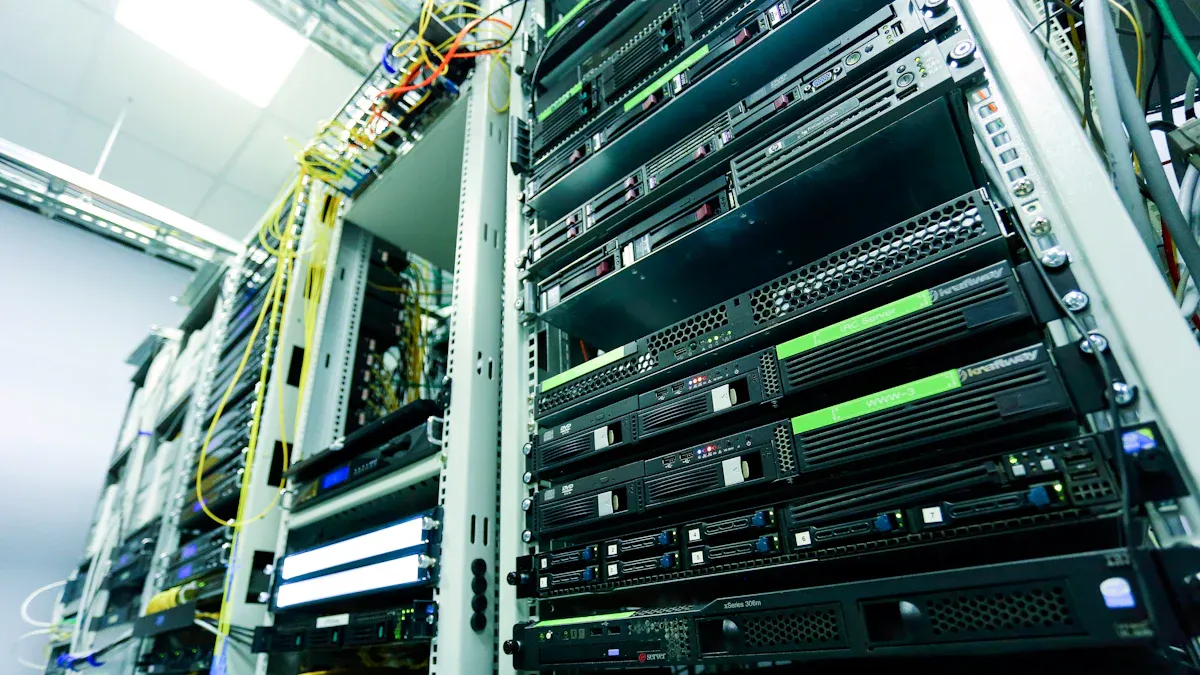
Newsunn’s 40G QSFP+ LR4 10km transceiver for SMF serves as a versatile solution across various high-bandwidth networking environments. Its design addresses the critical need for reliable, long-distance 40 Gigabit Ethernet connectivity. This section explores its primary applications.
Data Center Interconnects (DCI) with 40G Transceiver for SMF
Data centers require robust and high-speed interconnections to manage massive data flows. The 40G QSFP+ LR4 10km transceiver plays a vital role in these demanding environments.
Rack-to-Rack Connectivity
Within a data center, high-performance servers and storage arrays reside in different racks. The 40G QSFP+ LR4 transceiver provides efficient rack-to-rack connectivity. It ensures rapid data transfer between these critical components. This setup supports applications requiring low latency and high throughput.
Building-to-Building Links
Large data center campuses often span multiple buildings. The Newsunn 40G QSFP+ LR4 10km transceiver facilitates high-speed links between these structures. It extends the reach of the data center network across distances up to 10 kilometers. This capability allows for distributed data center architectures and disaster recovery solutions.
Campus Network Backbones
The 40G QSFP+ LR4 transceiver for SMF is crucial for implementing 40G links between backbone switches in campus networks. This applies particularly when backbone switches are not co-located. These transceivers facilitate a high-availability mesh architecture. They connect each backbone switch to all other backbone switches.
- Extended Reach: 40G QSFP+ LR4 transceivers cover distances up to 10 km over single-mode fiber (SMF) using LC connectors. This makes them suitable for campus-wide deployments.
- Technology: They utilize CWDM wavelengths (1271–1331 nm) for efficient data transmission.
- Use Case: They are specifically designed for enterprise campuses, metro networks, and data center interconnect (DCI).
- Advantages: They offer extended reach, lower dispersion, and compatibility with carrier-grade equipment. This ensures reliable backbone connectivity.
- Deployment Scenario: Newsunn recommends them for campus/metro links using SMF and LC duplex connectors.
Telecommunications Networks Utilizing 40G Transceiver for SMF
Telecommunications networks demand high capacity and reliability. The Newsunn 40G QSFP+ LR4 10km transceiver meets these stringent requirements.
Metro Area Networks (MAN)
40G QSFP LR4 transceivers are designed for long-range applications, including metropolitan area networks (MANs) and wide area networks (WANs). They utilize single-mode fiber and operate at a 1310nm wavelength. While these transceivers can be more susceptible to RFI due to their longer wavelength and single-mode fiber, many are engineered with advanced shielding and filtering techniques to mitigate RFI. This ensures good signal integrity.
Central Office Links
The 40G QSFP+ LR4 transceiver supports a 40Gbps data rate. It applies to long-distance communication links, including those for communication operators. This aligns with central office functions. These transceivers are widely used in telecom and carrier networks for applications such as ‘Central office or POP aggregation’ and ‘Wide-Area Backbones’ for 10–40km fiber runs.
Service Provider Infrastructure
Service providers build extensive networks to deliver various services. The 40G QSFP+ LR4 10km transceiver provides the necessary bandwidth for their core infrastructure. It supports high-speed data transport between network nodes. This enables efficient delivery of internet, voice, and video services to customers.
Enterprise Network Deployments with 40G Transceiver for SMF
Enterprise networks require robust and scalable solutions to support growing data demands. Newsunn’s 40G QSFP+ LR4 10km transceiver offers significant advantages for these environments.
Large Campus Networks
Large enterprises often operate across extensive campuses. The 40G QSFP+ LR4 transceiver provides the backbone connectivity for these sprawling networks. It links various buildings and departments with high-speed, reliable connections. This ensures seamless communication and data access across the entire organization.
Distributed Office Connectivity
Companies with distributed offices need efficient ways to connect their remote locations. The 40G QSFP+ LR4 10km transceiver facilitates high-bandwidth links between these offices. It supports applications like centralized data storage, video conferencing, and cloud access. This enhances collaboration and operational efficiency.
High-Bandwidth Server Links
Modern enterprise applications, such as virtualization, big data analytics, and cloud computing, demand significant bandwidth. The 40G QSFP+ LR4 transceiver connects high-performance servers to the network core. It ensures these servers operate at peak efficiency. This prevents bottlenecks and supports the smooth operation of critical business processes.
Compatibility and Integration of the 40G QSFP+ LR4 10km Transceiver for SMF

Newsunn’s 40G QSFP+ LR4 10km transceiver seamlessly integrates into diverse network environments. Its design prioritizes compatibility and ease of management, ensuring smooth operation within existing infrastructures.
Network Equipment Compatibility for the 40G Transceiver for SMF
Ensuring the transceiver works harmoniously with network equipment is paramount for efficient data flow.
Switches and Routers
The 40G QSFP+ LR4 transceiver readily connects with a wide array of switches and routers. Network administrators can deploy these modules in devices supporting QSFP+ ports. This allows for high-speed uplinks and inter-device connections. The transceiver’s adherence to industry standards simplifies its adoption across various hardware platforms.
Network Interface Cards (NICs)
High-performance servers and storage systems often utilize Network Interface Cards (NICs) with QSFP+ ports. Newsunn’s 40G QSFP+ LR4 transceiver connects directly to these NICs. This provides servers with 40 Gigabit Ethernet connectivity. It supports demanding applications that require substantial bandwidth.
Vendor Interoperability
The 40GBASE LR4 and QSFP 40G PSM4 LR transceivers inherently offer excellent interoperability because they follow well-established industry standards. This means modules from different vendors generally work smoothly together, and cross-platform compatibility is usually trouble-free. They also operate correctly on various network devices from vendors like Cisco, Arista, Juniper, and Huawei due to adherence to the QSFP+ MSA framework. The 40G QSFP+ LR4 transceiver is 100% compliant with the Multi-Source Agreement (MSA), ensuring strong interoperability. It can interoperate with SFP+ CWDM and 10GBASE-LR (10km) and is compatible with Cisco® compatible 40GBase QSFP+ transceivers.
To ensure optimal interoperability:
- Always clean fiber connectors. Long-reach modules are sensitive to dust, and proper cleaning significantly reduces insertion loss.
- Regularly update network devices with the latest firmware. This enhances compatibility and performance.
- Check specifications of current networking devices. Ensure they support the 40G QSFP+ LR4 transceiver and adhere to Multi-Source Agreement standards for seamless integration.
Fiber Infrastructure Requirements for the 40G Transceiver for SMF
Proper fiber infrastructure is crucial for the 40G QSFP+ LR4 10km transceiver’s performance.
OS2 Single-Mode Fiber (SMF)
OS2 single-mode fiber is suitable for 40G QSFP+ LR4 transceivers because it supports a link length of 10 kilometers with these modules. This fiber type minimizes signal loss and dispersion over long distances. It provides the ideal medium for the transceiver’s 10km reach.
Duplex LC Connector Type
The Newsunn 40G QSFP+ LR4 transceiver utilizes a duplex LC connector. This small form-factor connector is widely adopted in data centers and enterprise networks. It offers reliable and secure connections.
Cabling Best Practices
Adhering to cabling best practices ensures optimal performance and longevity.
- Avoid excessive bending of fibers. Maintaining the recommended bend radius prevents performance degradation.
- Properly route and secure fiber cables. This prevents physical damage and maintains signal integrity.
Management and Monitoring for the 40G Transceiver for SMF
Effective management and monitoring capabilities are essential for maintaining network health.
Digital Diagnostics Monitoring (DDM)
The Newsunn 40G QSFP+ LR4 transceiver supports Digital Diagnostics Monitoring (DDM). This feature provides real-time access to critical operating parameters. Network administrators can monitor these parameters to assess transceiver health.
Real-time Performance Data
DDM provides real-time data on various metrics. These include transmit power, receive power, temperature, and supply voltage. This continuous monitoring allows for proactive identification of potential issues.
Troubleshooting Capabilities
Real-time performance data significantly aids in troubleshooting. Observing Tx Power, Rx Power, Temperature, and Bias Current helps detect issues early. Network engineers can quickly diagnose problems. This minimizes downtime and ensures consistent network performance. Implement link monitoring and utilize DDM features regularly for proactive maintenance and issue resolution. Regularly monitor environmental conditions and utilize Digital Optical Monitoring (DOM) features to maintain performance and extend transceiver lifespan.
Deployment Scenarios and Advantages of the 40G QSFP+ LR4 10km Transceiver for SMF
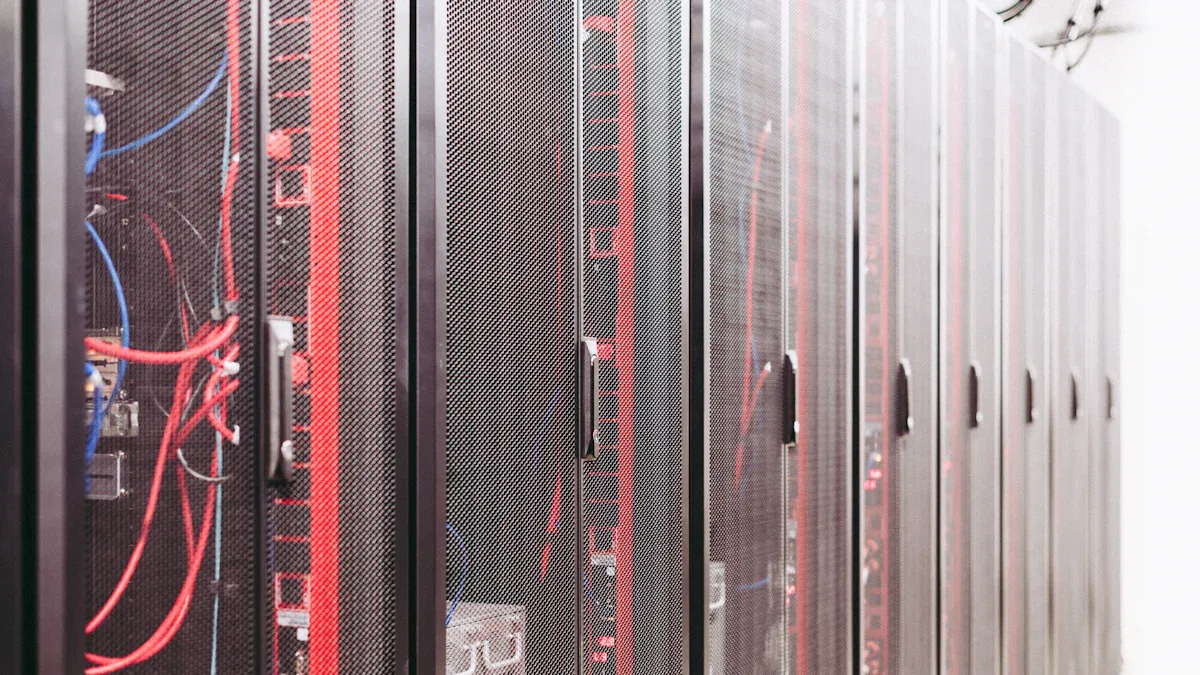
Newsunn’s 40G QSFP+ LR4 10km transceiver for SMF offers significant benefits for network architects. It provides robust solutions for various deployment challenges.
Long-Distance 40G Connectivity with the Transceiver for SMF
This transceiver excels in scenarios requiring extended reach for 40 Gigabit Ethernet.
Overcoming Distance Limitations up to 10km
The Newsunn 40G QSFP+ LR4 module effectively overcomes distance limitations. It transmits 40Gb/s data up to 10 kilometers over single-mode fiber. This capability makes it ideal for connecting geographically dispersed network segments. It supports critical links between data centers or campus buildings.
Cost-Effectiveness for 10km Links
Deploying the 40G QSFP+ LR4 transceiver for SMF proves highly cost-effective for 10km links. It eliminates the need for expensive signal repeaters or complex amplification systems. This reduces both initial capital expenditure and ongoing operational costs.
Comparison with Other 40G Transceivers
Understanding the differences between 40G transceiver types helps in selecting the right solution.
QSFP+ SR4 vs. LR4 Transceiver for SMF
The QSFP+ SR4 and LR4 transceivers serve distinct purposes based on distance and fiber type.
| Feature | QSFP+ SR4 Transceiver | QSFP+ LR4 Transceiver |
|---|---|---|
| Reach | Up to 100m (OM4) | Up to 10km |
| Fiber Type | Multimode Fiber (OM3/OM4) | Single-Mode Fiber (OS2) |
The QSFP-SR4-100G supports transmission distances up to 70 meters over OM3 multimode fiber (MMF) and 100 meters over OM4 MMF. This makes it suitable for short-reach data center connections. In contrast, the QSFP-LR4-100G offers a significantly longer reach of up to 10 kilometers. It utilizes single-mode fiber (SMF) for long-haul data center interconnects and telecom backbones.
MPO vs. LC Connectors
QSFP+ SR4 modules typically use MPO/MTP connectors. These connectors handle multiple fiber strands for parallel optical transmission. QSFP+ LR4 modules, including Newsunn’s, use duplex LC connectors. LC connectors are standard for single-mode fiber connections. They offer a simple, reliable interface for two-fiber links.
Scalability and Future-Proofing with the 40G Transceiver for SMF
Newsunn’s 40G QSFP+ LR4 transceiver provides a clear path for network evolution.
Migration Path to Higher Speeds
The migration path involves an evolution from 40G QSFP+ to 100G QSFP28. This uses more advanced signaling for increased performance. Further advancements lead to the QSFP-DD form factor, supporting 400G and 800G by doubling electrical contacts. This design allows network architects to scale capacity within the same physical footprint. Notably, QSFP-DD modules are backward compatible with QSFP28 and QSFP+ modules, providing a direct upgrade route. The inherent scalability of the QSFP family ensures a clear and cost-effective upgrade path. Organizations can start with 40G and seamlessly transition to 100G QSFP28 and beyond as their needs grow.
Investment Protection
40G QSFP+ transceivers offer a smooth migration path by supporting breakout configurations (4x10G). This feature allows for a gradual transition from existing 10G infrastructure. It protects investments as networks evolve to higher speeds.
Newsunn’s Value Proposition for the 40G QSFP+ LR4 10km Transceiver for SMF

Newsunn offers significant advantages with its 40G QSFP+ LR4 10km transceiver. Customers benefit from superior product quality, economic efficiency, and comprehensive support. Newsunn designs its solutions to meet the rigorous demands of modern high-speed networks.
Reliability and Performance of the 40G Transceiver for SMF
Newsunn prioritizes the unwavering reliability and high performance of its optical modules. These factors are crucial for maintaining stable network operations.
Rigorous Testing Procedures
Newsunn subjects every 40G QSFP+ LR4 10km transceiver to rigorous testing. This process includes environmental stress tests and extensive functional verification. Newsunn ensures each module meets stringent quality standards before leaving the factory. This commitment to quality minimizes field failures and maximizes uptime for network operators.
Consistent Data Transmission
The Newsunn transceiver delivers consistent and stable data transmission. It maintains signal integrity across its 10km reach. For a QSFP 40G 1310nm 10km LC optical transceiver, which aligns with Newsunn’s 40G QSFP+ LR4 10km transceivers, the typical bit error rate (BER) observed during consistent data transmission is below 10⁻¹². This extremely low BER ensures reliable data delivery for critical applications.
Cost-Effectiveness of the 40G Transceiver for SMF
Newsunn understands the importance of economic viability for network deployments. Its 40G QSFP+ LR4 10km transceiver offers a cost-effective solution without compromising quality.
Competitive Pricing
Newsunn provides competitive pricing for its 40G QSFP+ LR4 10km transceivers. This allows businesses to upgrade their networks to 40G speeds more affordably. Customers receive high-performance modules at a value-driven price point.
Reduced Operational Expenses
The efficient design of Newsunn’s transceivers contributes to reduced operational expenses. Their low power consumption minimizes energy costs. The high reliability of the modules also lowers maintenance requirements. This translates into significant long-term savings for network infrastructure.
Technical Support and Warranty for the 40G Transceiver for SMF
Newsunn stands behind its products with robust technical support and a comprehensive warranty. This provides customers with peace of mind.
Expert Assistance
Newsunn offers expert technical assistance for its 40G QSFP+ LR4 10km transceiver. A team of knowledgeable professionals is available to help with installation, configuration, and troubleshooting. Customers receive prompt and effective solutions to their technical queries.
Product Guarantee
Newsunn provides a strong product guarantee for its 40G QSFP+ LR4 10km transceiver. This warranty covers manufacturing defects and ensures product longevity. It reflects Newsunn’s confidence in the quality and durability of its optical modules. Customers can invest in Newsunn products with assurance.
Newsunn’s 40G QSFP+ LR4 10km transceiver offers significant advantages. It provides reliable 40 Gigabit Ethernet connectivity over distances up to 10 kilometers. This module ensures high performance and cost-effectiveness for network upgrades. Ideal deployment scenarios include data center interconnects, telecommunications networks, and large enterprise campuses. Newsunn rigorously tests its products, guaranteeing consistent data transmission. Customers benefit from competitive pricing, reduced operational expenses, and expert technical support. Choose Newsunn for dependable 40G SMF connectivity solutions.
FAQ
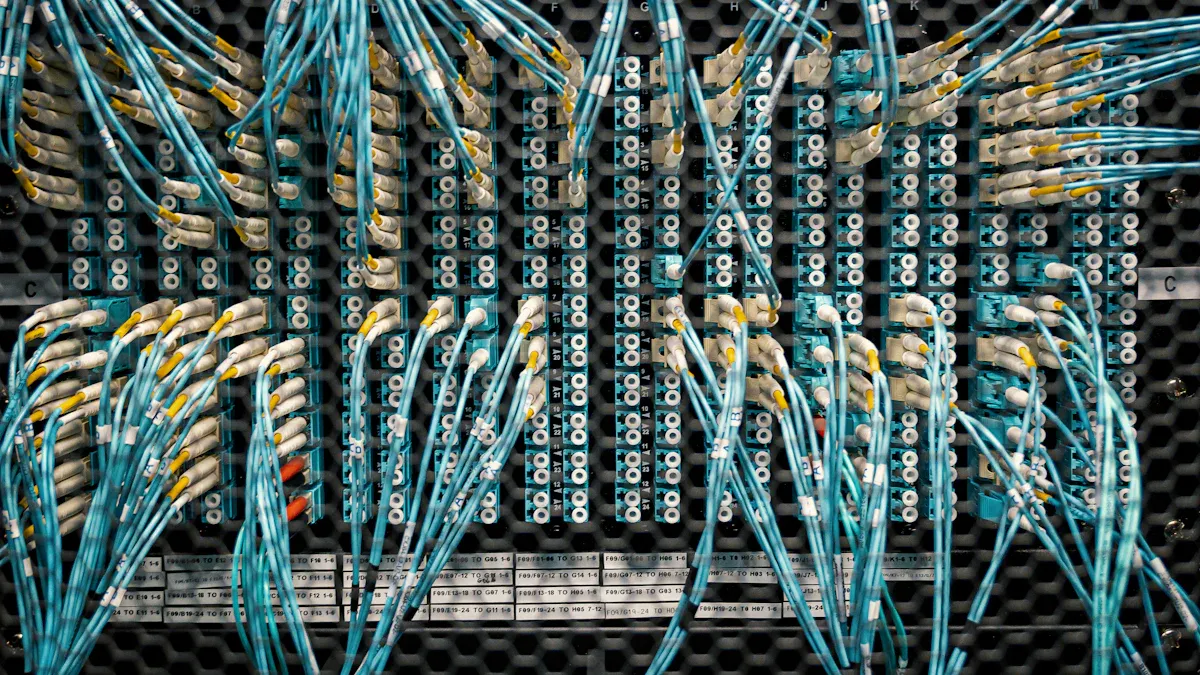
What is the Newsunn 40G QSFP+ LR4 10km transceiver?
This is a high-performance optical module. It provides 40 Gigabit Ethernet connectivity. It transmits data up to 10 kilometers over single-mode fiber. The module converts four 10Gb/s electrical signals into four CWDM optical signals.
What does "LR4" signify in this transceiver?
"LR4" stands for Long Reach, 4-lane. It indicates the transceiver’s capability. It transmits data over long distances. It uses four distinct optical wavelengths. This allows efficient 40Gb/s transmission over a single fiber pair.
What type of fiber does this transceiver require?
The Newsunn 40G QSFP+ LR4 transceiver requires single-mode fiber (SMF). Specifically, OS2 SMF is ideal. This fiber type ensures optimal performance. It minimizes signal loss over the 10-kilometer distance.
What is the maximum transmission distance for this module?
This transceiver supports a maximum transmission distance of 10 kilometers. It achieves this over single-mode fiber. This makes it suitable for connecting distant network segments. It is perfect for data center interconnects or campus backbones.
Is the Newsunn 40G QSFP+ LR4 transceiver compatible with other network equipment?
Yes, it is highly compatible. The transceiver adheres to IEEE 802.3ba and QSFP+ MSA standards. This ensures interoperability with various switches, routers, and NICs. It works across different vendors’ equipment.
What are the primary applications for this transceiver?
Its core applications include data center interconnects. It also serves telecommunications networks. Furthermore, it supports large enterprise network deployments. It provides high-speed links for rack-to-rack, building-to-building, and campus connectivity.
Does this transceiver support Digital Diagnostics Monitoring (DDM)?
Yes, it supports DDM. This feature allows real-time monitoring of critical parameters. These include transmit power, receive power, and temperature. DDM helps network administrators manage and troubleshoot the module effectively.

